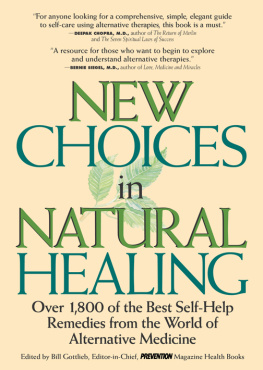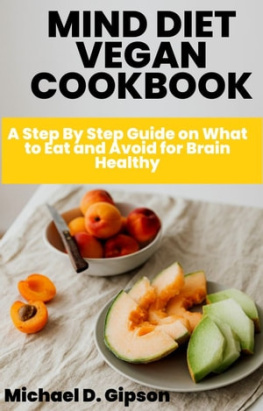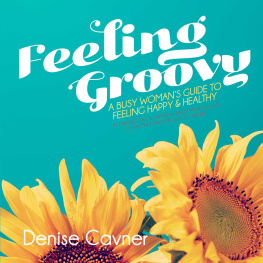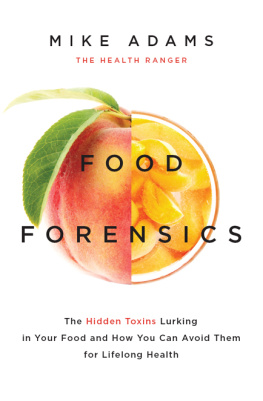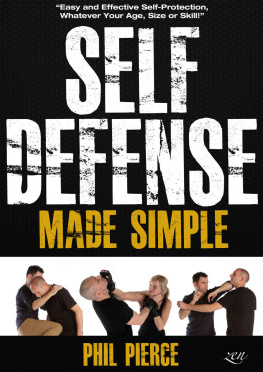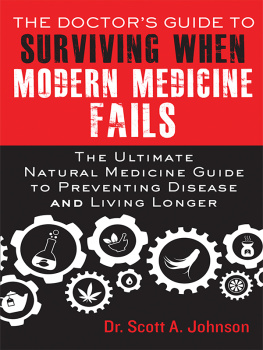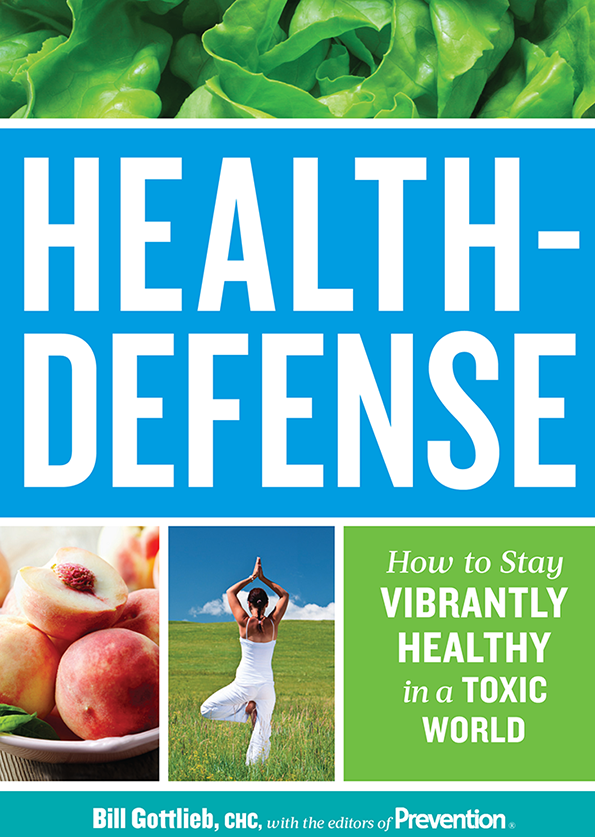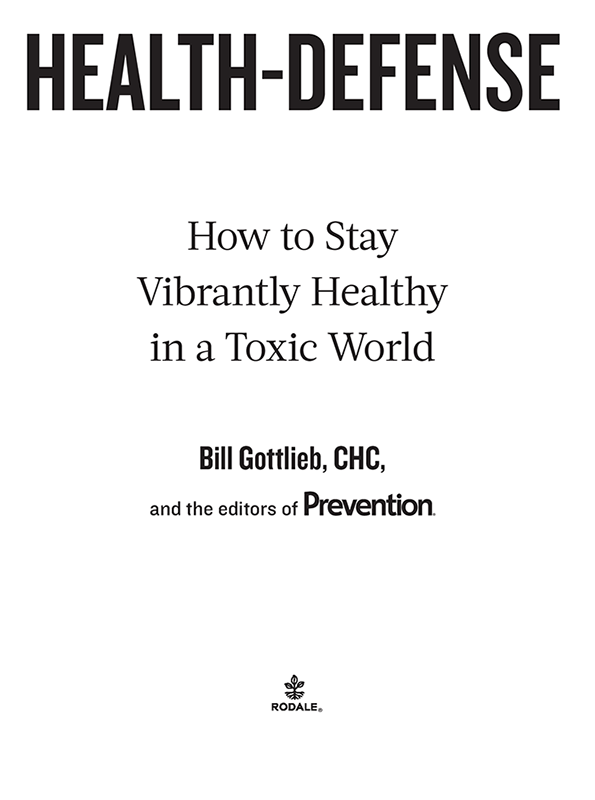
This book is intended as a reference volume only, not as a medical manual.
The information given here is designed to help you make informed decisions about your health. It is not intended as a substitute for any treatment that may have been prescribed by your doctor. If you suspect that you have a medical problem, we urge you to seek competent medical help.
Mention of specific companies, organizations, or authorities in this book does not imply endorsement by the author or publisher, nor does mention of specific companies, organizations, or authorities imply that they endorse this book, its author, or the publisher.
Internet addresses and telephone numbers given in this book were accurate at the time it went to press.
2015 by Rodale Inc.
All rights reserved. No part of this publication may be reproduced or transmitted in any form or by any means, electronic or mechanical, including photocopying, recording, or any other information storage and retrieval system, without the written permission of the publisher.
Prevention is a registered trademark of Rodale Inc.
Book design by Christina Gaugler
Library of Congress Cataloging-in-Publication Data is on file with the publisher.
eISBN 9781609615185

We inspire and enable people to improve their lives and the world around them.
For more of our products visit prevention.com or call 8008484735.
This book is dedicated to my wife, Denise Getz (19542013), a breast cancer survivor for 11 years, who battled toxicity every day with intelligence, diligence, and a heart devoted to life and to love. May this book be an active memorial to her commitment to natural health and healing by providing help to all who want to achieve vibrant health in our toxic world.
CONTENTS
ACKNOWLEDGMENTS
I would like to thank a few of the people who helped make this book possible:
Lora Sickora, my (very) patient and highly skilled editor at Rodale.
Anne Egan, editorial director of direct response books at Rodale, who graciously and energetically supported the book in its many forms.
The superb editorial team from Rodale News, whose original and devoted work formed the foundation of this bookand to all the many experts who contributed to their articles.
The senior project editor, Hope Clarke, and the designer, Chris Gaugler.
My literary agent, Chris Tomasino, who sold this book to Rodale and successfully saw it through its metamorphoses, and who has provided unparalleled professional and personal support over the 16 years we have worked together.
David Carpenter, MD, director of the Institute for Health and Environment at the University of Albany, who helped guide the contents and perspective of this book
INTRODUCTION
H eres the little-known bad news about environmental toxins: Theyre a secret cause of lots of diseases, including cancer, high blood pressure, heart disease, stroke, type 2 diabetes, Alzheimers and Parkinsons, male and female infertility, asthma and chronic obstructive lung disease, hearing loss, hypothyroidism, andwell, you get the idea.
Now heres the little-known good news about environmental toxins: You can easily minimize or even eliminate your exposure to them. And this means you can also easily protect yourself against the aforementioned diseases (and many more). Not only that, but as you clean up your personal environment, youll experience quicker, easier weight loss; more energy; fewer infections, like colds and the flu; more mental clarity; and better sleep.
And thats what Health-Defense is all aboutself-defense. Its about learning crafty tricks and simple strategies that stop nasty toxins from bothering you. Its about becoming healthier and stronger. And (maybe best of all) its about becoming boldly confident, because in a world that sometimes seems like its out to get you, youll be able to block and disarm any toxin that comes your way. (Or avoid it in the first place.)
That bold attitude is a far cry from how most Americans think and feel about environmental toxins. Most of us figure theres little or nothing we can do to protect ourselves from toxins, so we shrug our collective shoulders and hope for the best (while often fearing the worst). Health-Defense delivers a far different message: You can understand the problem of environmental toxins and pollutants, you can apply simple solutions, and you can achieve vibrant health in a toxic world.
YOU CAN DEFEND YOUR HEALTH!
To help build your confidence that the previous assertions are fact, not fiction, lets double-back a bit and address a crucial question: Just how important are environmental toxins in causing disease?
For the most accurate answer, we talked to David O. Carpenter, MD, director of the Institute for Health and the Environment at the University at Albany, State University of New York. Dr. Carpenter has been researching the link between the environment and health for more than 30 years, authoring or coauthoring hundreds of studies on the subject. Using cancer as an example, he estimates that environmental factors, including toxins, cause a whopping 85 percent of cancers (not the 15 percent generally cited by conservative experts).
Focusing on just one type of chemicalpolychlorinated biphenyls (PCBs), a widely used toxin that was banned about a decade ago but still permeates the environmentDr. Carpenter enumerates its disastrous health effects: PCBs cause cancer; suppress the immune system; increase the risk of heart disease, high blood pressure, and diabetes; have negative effects on bones and joints; and affect the brain, reducing cognitive function and shortening attention spanand some evidence even links them to a higher risk of depression.
In fact, Dr. Carpenters research shows that the level of PCBs in the blood is a stronger risk factor for the development of high blood pressure (itself a risk factor for heart attack and stroke) than any other factor (except for age)more important, for example, than whether or not youre overweight or have high cholesterol. Yet medical professionals are totally oblivious about this risk factor for high blood pressure, he says.
Diabetes is another example where chemical threats are commonly ignored. Ask physicians what causes adult-onset diabetes and theyll say its being overweight or not getting enough exercisebut thats not true, Dr. Carpenter says. What is true? Well, research shows that the most accurate predictor of diabetes is the concentration of certain types of pesticides in the bloodpeople with the highest pesticide levels had the highest risk of diabetes, compared to those with the lowest levels. It is chemicalsnot just obesity itselfthat is causing diabetes, he notes.
When we take blood samples for our research, we can quantify nearly 100 different environmental chemicals that may pose a risk to personal health, Dr. Carpenter explains. Like PCBs, many of these chemicals are cancer-causers. But many of them are also endocrine disruptorschemicals that mess with your hormone-generating endocrine system. And these disruptors, he says, change a variety of critical aspects of human body functioning. And when he says critical, hes not exaggerating.
Your thyroid hormones regulate metabolism, controlling everything from your body temperature to your appetite to your ability to fall asleep. Your pancreatic hormones, such as insulin, control blood sugar, your bodys fundamental fuel. Your sex hormonesestrogen in a woman, for example, and testosterone in a manplay a role not only in desire and sexual performance but also in clear thinking and daily motivation. Endocrine disruptors can mangle these functionsand many more.


